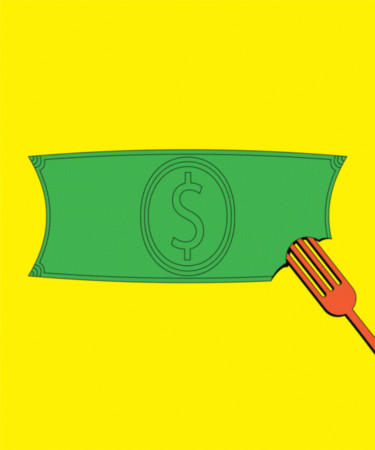At restaurants and bars in the United States today, there is an expectation to tip, and to tip well, regardless of the service. The service industry is exempt from paying members of staff minimum wage, with the assumption that employees will make or exceed that salary through tips. But in many countries — particularly in Europe — tipping is considered to be unnecessary and disrespectful, making it difficult for drinks lovers with wanderlust to decipher how to handle gratuities without offending anyone.
This wasn’t always the case. In a strange twist of fate, modern tipping customs in the United States and Europe used to be reversed; before the 20th century, tipping in the U.S. was frowned upon and deemed rude, while it was the standard across the pond, says Professor Marc Mentzer in his article “The Payment of Gratuities by Customers in the United States: An Historical Analysis.”
In England, tipping was once rooted in the “vail” practice from the early modern period, where guests visiting large estates, typically owned by noblemen, would leave a small gratuity for the staff when they left as a way to thank them for their services. This practice was commonplace until it was abolished in the mid-1800s, but it later crept back in during the rise of restaurants and formal hotels. On mainland Europe at that time, tipping was also expected, as servers were not paid regular wages; all of their income was rooted in tips, similar to the tipping schematics in the modern United States.
During this period, Americans visiting Europe often griped about the tipping requirement — but this would soon shift when hospitality businesses, which at the time were primarily hotels, moved from the “American Plan” to the “European Plan.” The American Plan, a common term in the hotel industry, means that meals are automatically included in the price of a hotel stay, while that was not the case with the European Plan. Before the 19th century, the U.S. hospitality industry was incredibly small, with no apparent need for tipping as a practice — it was considered presumptive and insulting, seen by managers as a bribe for more food or better accommodations. But as the service industry expanded in the mid-1800s due to the emergence and growth of the middle class, individual employees began taking on more work, including serving guests — highlighting a need for higher, more equitable wages.
Slowly, due to an increasing expectation for high-caliber service alongside more individual labor, the European Plan was introduced to the American hotel industry after years of back-and-forth debate. From 1900 until the 1920s, tipping was either begrudgingly accepted or met with hostility by customers. Some “anti-tipping hotels” used “servidors,” doors with compartments on both sides to pass food and drinks through, creating a barrier so that guests never even saw their servers’ faces. Similarly, table service restaurants fell out of fashion and were replaced by cafeterias so that customers did not have to worry about whether or not they were expected to tip at the end of meals. Tipping became such a contested problem with customers that six states even banned the practice from 1909 until 1915, though there wasn’t much enforcement.
By the mid-1920s, tipping became a norm, with some trade publications — many of which had been staunchly against it — beginning to publish articles in favor of the practice. In a 1921 edition of “Hotel Monthly,” Wallace Rice even stated:“When it gets so that a man pays money to another man in order to retain his own self-respect, which he forfeits if he doesn’t, it certainly may be said that tipping has entered the national consciousness.”
Prohibition — perhaps shockingly — became the final deciding factor on the widespread implementation of the European Plan. Hotels and restaurants lost significant portions of their finances with its ratification and were forced to shift to the European Plan to make that money back. It wasn’t fully accepted right away, but by the end of Prohibition, the only establishments not accepting tips were considered “high class.” Managers and owners widely saw the European Plan as an opportunity, allowing them to trim down their salaries with the expectation that the customers would pick up the slack.
In the later 20th century, Europeans began to move away from the tipping model, with businesses realizing it was more equitable to add a built-in gratuity fee to guests’ meals to adequately pay employees. Since the early 2000s, American restaurants have also started switching to this new model.
So the next time you think about skipping or skimping on the tip, consider how much that person really depends on that income for their livelihood — and the decades-long attempt by managers and owners to avoid accountability for paying their workers adequately. And if you truly don’t see the purpose in leaving a decent tip, consider moving to Europe.
